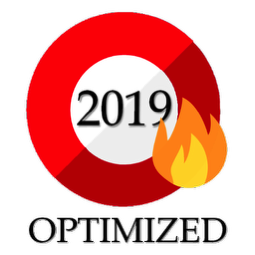dBASE Plus is a rapid application development toolset that includes a modern object oriented programming language (dBL) that runs on 32 and 64 bit versions of Microsoft Windows. It can be used to build a wide variety of applications including web applications, rich client applications, middleware applications, and server based applications. dBASE Plus has robust database access support and can access most modern database engines including Oracle, SQL Server, Sybase, MySQL, Informix, DB2, InterBase, FireBird, Pervasive SQL, Microsoft Access and other databases that can be accessed via ODBC. In addition dBASE Plus supports access to its native .dbf tables (levels 3, 4, 5, and 7) as well as Paradox (.db) tables, FoxPro and Visual FoxPro tables.
dBASE Plus Web applications can be run on most Windows based web servers including Microsoft IIS and Apache.
dBASE Plus includes a robust IDE (Integrated Development Environment) with a Command Window, a Navigator (to access files), a Just-In-Time compiler, a Preprocessor, a Virtual Machine Interpreter, a Linker for creating dBASE application .exe's, a freely available Runtime Engine, and numerous two-way GUI (Graphical User Interface) design tools including a Form Designer, Report Designer, Menu Designer, Label Designer, and Datamodule Designer (dQuery Developer Edition) that allow you to design visually using the mouse to select, position and size objects.
Two-Way Tools refers to the ability to switch back and forth between using a GUI design tool that generates code and the Source Code Editor that allows you to enter and edit code manually. The Source Code Editor features syntax highlighting, auto-indent capability, and a treeview for quick navigation of classes, objects, methods and functions in a source file. Other tools include a Project Manager that simplifies building and deploying a dBASE application, an integrated Debugger, the SQL Query Designer, and the Table Designer which supports creating new or modifying existing database tables.
The dBASE Plus Debugger includes a source code window and supports breakpoints and single stepping, and has windows to view the execution stack, watch expressions, and current variables, objects, and properties.
The dBASE Language (dBL) is an elegant state-of-the-art dynamic object oriented language. It supports subclassing via single inheritance, dynamic subclassing (by adding new properties to a class at runtime), user-defined classes, automatic memory management, dynamically typed variables, structured exception handling via Try...Catch...EndTry statements, standard flow control statements (If...Else...Endif, Do While...Enddo, Do Case...Case...Case...EndCase), a full set of variable scopes (public, private, local, and static), efficient string manipulation and math support, powerful multi-dimensional arrays, support for function pointers and codeblocks, and much more.
dBASE Plus contains many built-in classes that include visual classes, data access classes, and numerous supporting classes. Visual classes include Form, SubForm, Menu, Toolbar, Notebook, Container, Entryfield, RadioButton, SpinBox, ComboBox, ListBox, PushButton, Image, Grid, ScrollBar, ActiveX, Report, ReportViewer, Text, TextLabel and many others. Data access classes include Session, Database, Query, Rowset, Field, StoredProc and Datamodule classes. Other classes include File, String, Math, Array, Date, Exception, Object and many others.
dBASE Plus also includes many classic legacy commands and functions from older versions of dBASE allowing for a high degree of backward compatibility. dBASE Plus ships with instructions and utilities designed to assist with upgrading legacy dBASE programs to modern Windows style programs.
The capabilities of dBASE Plus may be extended to access external or third party programs or libraries via several methods including OLE and COM interfaces (via the OleAutoClient object), by including ActiveX components on dBASE Forms, or by directly calling functions contained in third party dynamic link libraries.
